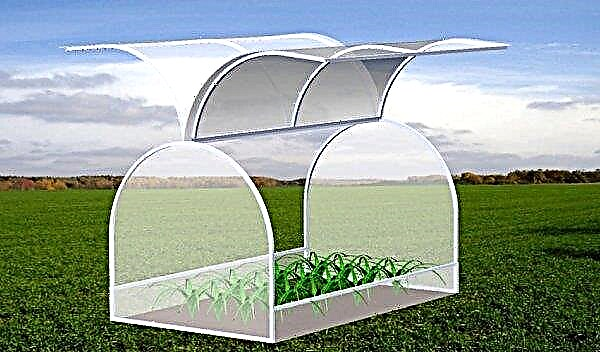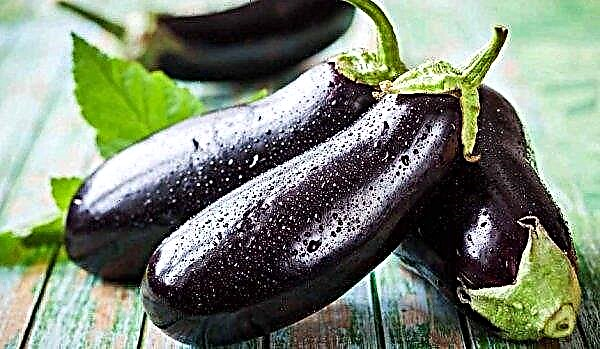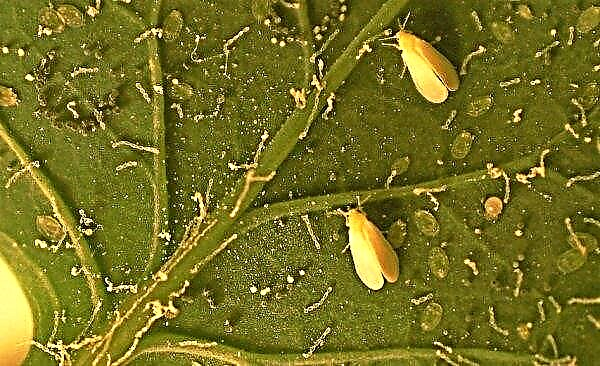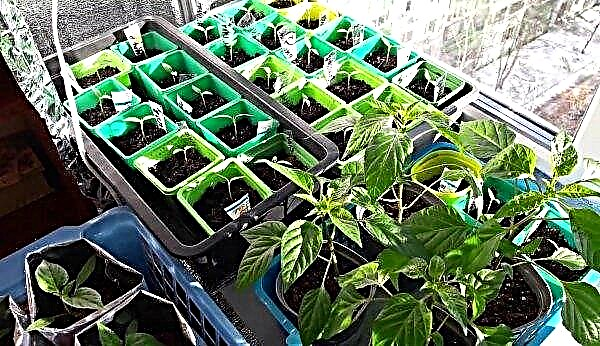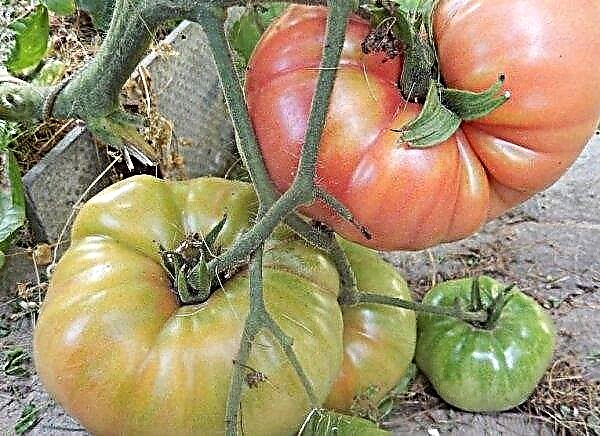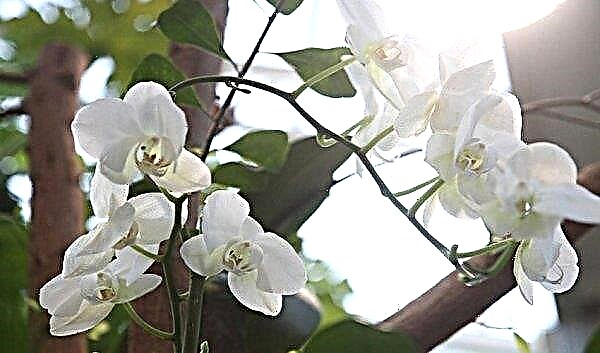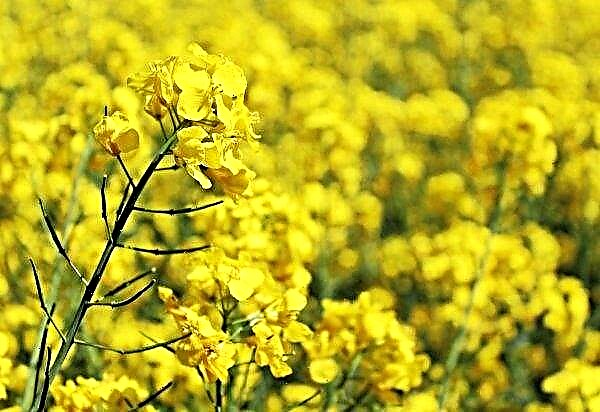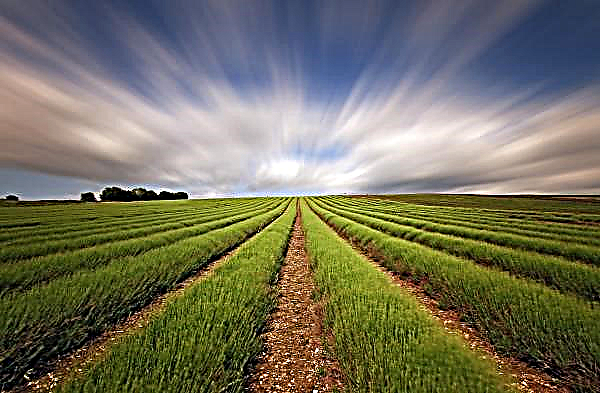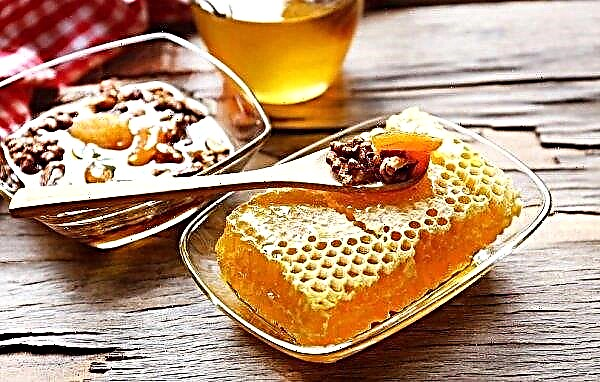Each gardener is trying to highlight and decorate his plot with something. Most often a flowerbed becomes a decorative decoration, attracting attention with colorful paints. However, its usual forms almost no longer cause interest, they have now been replaced by new ways of decorating flower beds - using stones. To build such a "beauty", it is not necessary to contact specialists. Having put your wit, desire and share of imagination, you can do everything yourself, but how - a further article will tell about this.
Types of flower beds from stones
The main advantage of using stone for decorating flower beds is the natural beauty of the material, its durability. However, the relatively low cost may well please the owners of the site. Depending on the design concept, you can choose the most suitable material in color, shape and texture. Some gardeners manage to find and collect blocks of stone on their own, if the landscape allows it.
Did you know? In the United States, on the border of the states of California and Nevada, there is the dried-up Lake Raistrake Playa. At its bottom are stone blocks weighing about 350 kg, which move by themselves, leaving traces on the ground.
Before proceeding with the construction of the flowerbed, you need to clearly understand what kind of view you want to see on your site. This will help to choose the right shape, material, as well as place the composition on the most favorable relief site.
Arabesque
Arabesque is one of the amazingly attractive types of flower beds, which can have a variety of shapes, sometimes complex, asymmetric. The birthplace of this type of flower beds are ancient eastern countries. Looking at the flowerbed, you get the feeling of a drawing, applied in bright colors. It can be geometric shapes, ornaments, images of flowers, butterflies, etc.

Previously, such flower beds were formed exclusively from plants, but today natural stone elements, such as marble or granite chips of different colors, pebbles are introduced into the flowerbed. They make out the contours of the composition. Immediately you need to consider that arabesques can be created in spacious areas, since in a small area you can’t get a beautiful flowerbed of this type. The ideal option is a plot located on a slope.
Rockery
Stones are the main element of the rockery. They are selected depending on the size of the site. On a small territory, even a lonely large boulder can be installed, and the surrounding space is filled with coniferous or deciduous plants, shrubs, flowers.
Important! For a rockery, arbitrary curved border shapes are preferred. Give it square or rectangular shapes — wrong.
On a spacious plot, you can create a whole garden of stones, picking up cobblestones of the same or different size. It is important to consider which side the review of the composition will be. If it is clearly visible from all sides, you can install a large stone in the center. If the composition is clearly visible from only one angle, large objects should be placed in the background.
 To create a rockery, it is advisable to choose the main boulders of the same breed with a slight difference in shades. Often an additional element is gravel bedding. Since the purpose of the composition is to recreate a corner of the natural landscape, it is not recommended to select multi-colored stones. This rule applies to flowering plants.
To create a rockery, it is advisable to choose the main boulders of the same breed with a slight difference in shades. Often an additional element is gravel bedding. Since the purpose of the composition is to recreate a corner of the natural landscape, it is not recommended to select multi-colored stones. This rule applies to flowering plants.
Japanese style
Gardens in the Japanese style have now gained great popularity as something exotic, unusual for the eye. The compactness of the composition is the main feature of landscape design, because historically it has developed so that in Japan the supply of territories for arranging gardens is very small. In fact, such a design is difficult to call a flower bed. Rather, it is a composition consisting of stones, gravel, dwarf trees, waterfalls and streams. This is due to the fact that the idea of the landscape of the Land of the Rising Sun is the harmony of the three elements: stone, water and plants.
Boulders and stones should be located asymmetrically on the site. They are supplemented with arbitrary placers of pebbles. It is advisable to surround the stone blocks with planting mosses, which over time will envelop them with themselves, giving the landscape a natural picture. Using pebbles, you can easily make an imitation of a stream. To do this, dig a moat, the bottom of which is covered with a layer of pebbles. Then, an ox pattern is applied over a stone placer with a rake.
 An obligatory element of a flowerbed in the Japanese style is a stone bowl - Tsukubai, in which, traditionally, the Japanese wash their hands before drinking tea. It should be made in the form of a barrel up to 50 cm high. Garden paths and winding paths can be laid out from stone plates of different colors.
An obligatory element of a flowerbed in the Japanese style is a stone bowl - Tsukubai, in which, traditionally, the Japanese wash their hands before drinking tea. It should be made in the form of a barrel up to 50 cm high. Garden paths and winding paths can be laid out from stone plates of different colors.
Gabion
Gabion is a structure made of metal mesh, the inside of which is filled with stones. The design is applicable both for the design of fences and flower beds. Gabion can have strict geometric shapes, which are easier and cheaper to create. Curved designs of different shapes will look more impressive. For the manufacture of galvanized mesh and stones are used, the dimensions of which should be 30 percent higher than the cell sizes.
A chopped boot, large gravel or smooth pellets are suitable as a filler. It is advisable to select stones in a single color palette. The combination looks quite harmonious if you make a gabion, where part of the grid will be filled with stones, and the other with wooden saw cuts. Such a duet will make the composition more natural.

Alpine hill
Alpine slide is somewhat similar to rockery, but still these are two different compositions. The decisive difference between these landscape objects is that the rockery is formed on a flat terrain (only slight differences in elevation are allowed), and the hill is an elevated multi-stage structure. There are two main types of alpine hills - a rock or a hillside. It is important to immediately determine what exactly you want to see on the site, since the placement of stones will depend on this.
When forming the slope, the peak is crowned with the main, the largest boulder and smaller stones are laid out lower, and small ones at the very base. When arranging rocks, on the contrary, large cobblestones should lie at the base, above - medium, and at the top - the smallest stones. In this case, the main condition is met - no symmetry.

Green spaces for the alpine hill are selected in accordance with the location. In the lower part, where the least rays of the sun and more moisture, you can plant unpretentious crops, such as fern, deer tongue. Above - dream grass, alpine cloves will look beautiful. At the top, you can symbolically plant an edelweiss - a mountain plant that is not afraid of a long stay in the sun.
Terraced slope
Terraced slope - a landscape object of stone walls of various sizes and tiers. This results in horizontal ledges resembling steps, on which, in fact, plants are planted. This design is easier to organize on a steep slope.
 For their construction, durable rocks are often used - granite, basalt. By the way, lovers of antiquity can take tiled limestone as a material, with which the structure will take the form of ramparts.
For their construction, durable rocks are often used - granite, basalt. By the way, lovers of antiquity can take tiled limestone as a material, with which the structure will take the form of ramparts.
Technology arrangement and location
In each individual case, the technology of the location of the stone flower bed may vary.
Important! In raised flower beds, the soil dries much faster, so be sure to equip a drip irrigation system.
But there are certain rules that should be followed in a particular case, namely:
- the flower garden should be positioned so that it is clearly visible, but does not interfere;
- using stones, it is better to arrange one large flower bed than to create several stony areas;
- if the soil has high humidity (for example, with a high occurrence of groundwater), it is recommended to arrange raised flower beds with an equipped drainage layer;
- for a small area, it is better to focus on the simple form of a flowerbed, as too ornate silhouettes will visually reduce the space;
- when choosing plants for flower beds, pay attention to their preferences: the requirements for lighting, moisture and soil composition should be the same.

How to make a flowerbed with your own hands
As mentioned earlier, a bed of stones can be done independently. Choosing which view is suitable for the design of your garden, you just have to prepare the material and you can begin to work.
Did you know? In Dubai, there is a real Miracle Park, numbering up to 45 million flowering plants. In lifeless sands you can see an incredible number of flower beds, including in the form of all kinds of pyramids, cars, stars, etc.
Stone preparation
To form an unusual beautiful flowerbed, you can choose a variety of stone materials, namely:
- limestone - allows you to arrange interesting landscape compositions thanks to a pleasant natural color with an extensive palette of shades: from white to pink and blue. However, it should be noted that the porous structure of the stone is not as strong as we would like. Over the years, precipitation will have a negative effect, small cracks will form on the stones. The problem can be solved by planting ground mosses in the formed faults;
- tuff - A variety of limestone with a much stronger structure, but, despite this, it is easy to process. This material is most often used to design stony flower beds. It also has many shades: white, purple, orange, gray, etc .;
- sandstone - just like limestone, it has a porous structure, but does not lose popularity among landscape designers. Boulders and rubble stones look especially impressive;
- slate - has a layered structure, which is its main feature. The stone has a special luster, it can be divided into separate fragments - plates. The material has a high cost, but it has a very high strength. Flower beds made of it can stand for decades;
- granite - this stone can rightfully be called the most beautiful. The main disadvantage is the high price. The material is able to oxidize the soil over time, this must be taken into account when buying vegetation for a flower bed;
- quartzite - the surface of the stone glistens and shimmers in the sun, as it has the ability to reflect light. The mineral has a wide palette of colors;
- basalt - heavy and durable rock that does not absorb moisture and is resistant to corrosion. The stones have a gray and black color, you can consider small greenish-yellow blotches;
- pebbles - good material for creating fences. Bonded with cement, it looks quite neat, and is often used for paving.
To this list it is worth adding a decorative stone. The main components in the manufacture of the material are stone chips and acrylic, and polyester resins are used as a connector. Production technology allows you to create material that successfully imitates different breeds of boulders. At the same time, decorative blocks are surprisingly strong and durable.
Stone laying
First, the site needs to be prepared: clean from debris, plants, level the surface of the soil. If you want to give the flowerbed the correct shape, you will need to make markup. The borders of a round flowerbed are formed in this way: two pegs are tied with a string, then one peg is dug in the center of the future flowerbed, and the second draw a circle.
The need for foundation construction depends on the weight of the future structure. If it is supposed to build a powerful border, this condition is mandatory. First you need to stack the overall stones, and then those smaller ones. Gaps are recommended to be filled with concrete mixture. This is best done from the inside, so as not to violate the naturalness of the composition.
 On the contour you need to dig a ditch, up to 30 cm deep, cover the bottom with roofing material (dense polyethylene can be used instead). A ditch is poured with cement to a third of the height, after which a layer of sand is laid and compacted. The foundation is ready.
On the contour you need to dig a ditch, up to 30 cm deep, cover the bottom with roofing material (dense polyethylene can be used instead). A ditch is poured with cement to a third of the height, after which a layer of sand is laid and compacted. The foundation is ready.
If you want to equip a Japanese kindergarten or rockery, stones are set with a deepening in the soil. For rock gardens - first remove the topsoil, lay a drainage pillow made of fine stone or cracked brick. After that, you can re-cover the slopes of the hill with fertile soil. Stones are best set in the fall, deepening as much as possible into the soil. By spring, under the influence of rainwater and melting snow, they will sag and firmly settle in the ground.
A flower bed made of stone will always be a bright accent of the garden, harmoniously blending into any style. Arrangement works can be carried out independently using inexpensive natural material. All these advantages undoubtedly indicate that such a design becomes the most profitable both in terms of aesthetics and accessibility.

